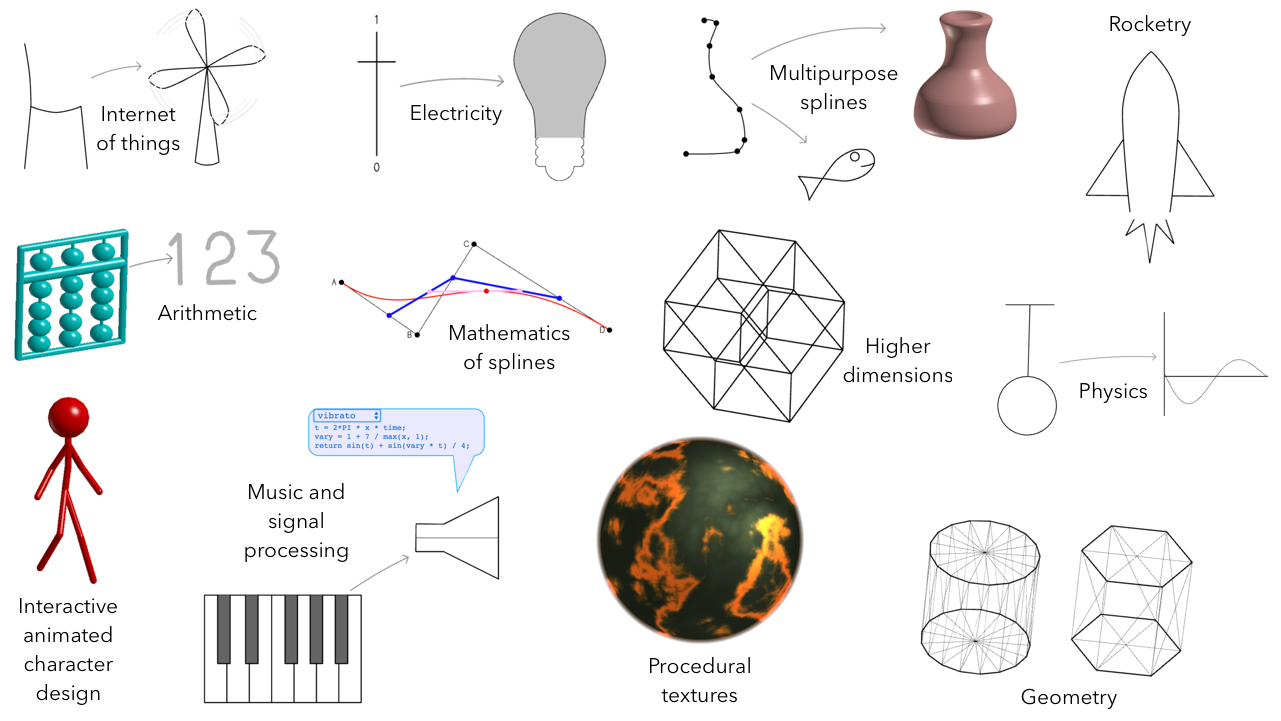From 1996 to 2013 I implemented lots and lots of 3D animated stuff in the Java programming language, which I made freely available to the world as Java applets. I implemented my own modeler and real-time software renderer and everything. It was really cool.
Unfortunately Oracle ended all that in mid-2013 when they changed things so that Java applets would be much more difficult for people to access. Sigh.
So starting in July 2013 I retooled and started implementing things in Javascript. That was wonderful because WebGL gave me the opportunity to implement my own hardware shaders, so I could do much more interesting things with real-time rendering (and also teach my students how to implement their own hardware shaders).
Unfortunately that transition left a very large back-catalog of my Java applets stranded. For most of them, I didn’t have the time or inclination to put in the many hours it would take to properly translate from one computer language to a very different one, although I did translate a few of them.
So now it’s 2020, and our lab is starting to transition over to creating VR worlds with the C++ programming language, because that’s the computer language you use with the Unreal game engine. And the Unreal game engine is an awesome software platform for making stuff in VR.
So I now find myself skipping entirely over the seven years of Javascript, and handing some of my old Java applets to grad students to translate into C++, so we can use them in VR. It’s an odd sort of leapfrogging, but I guess that’s the way things go.
